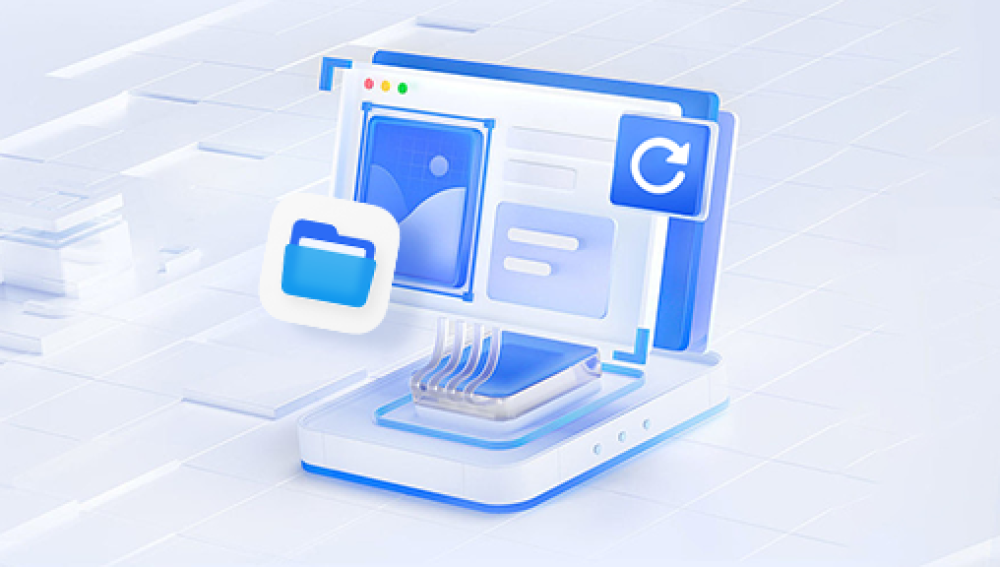Files disappear, hard drives fail, USB sticks become corrupted, and sometimes entire servers go down. When this happens, your first thought might be: “Is there any way to get this back?” Fortunately, if you're in Pittsburgh, PA, you’re in luck—there are numerous professional data recovery services at your fingertips.
Chapter 1: Data Loss
1.1 What is Data Loss?
Data loss refers to the unexpected loss of digital information stored on a computer, external hard drive, SSD, memory card, or other storage medium. It can be due to a range of causes:

Accidental deletion
Hardware failure
Power surges
Software corruption
Virus or malware attack
Natural disasters (flood, fire, etc.)
1.2 Common Devices Needing Recovery
External hard drives (HDDs and SSDs)
USB flash drives
SD and microSD cards
Internal computer drives
RAID systems
NAS (Network Attached Storage)
Phones and tablets
1.3 Types of Data Loss
There are two main categories:
Logical failure: The hardware is fine, but data is inaccessible due to corruption, file system damage, or malware.
Physical failure: Hardware components are damaged, like in cases of head crashes or fire damage.
Chapter 2: Data Recovery in Pittsburgh – What You Need to Know
2.1 Is Data Recovery Possible?
Yes, and it’s more successful than many believe—especially when handled by professionals. Even data that appears lost or destroyed may be recoverable using specialized tools in cleanroom environments.
2.2 DIY vs. Professional Recovery
DIY tools work for minor logical failures.
Professional recovery is best for physical damage, RAID/NAS failures, and important business or personal data.
Chapter 3: Online data recovery
Drecov Data Recovery is a robust and user-friendly software designed to recover lost, deleted, or formatted files from a variety of storage devices. Whether you've accidentally deleted important files, lost data due to a system crash, or faced a format error on your external hard drive or SD card, Drecov Data Recovery can help retrieve your valuable data. It supports a wide range of storage media, including hard drives, SSDs, USB flash drives, memory cards, and more.
Key Features:
File Recovery: Drecov Data Recovery specializes in recovering various types of files, including documents, photos, videos, music, and more. It scans storage devices for lost or deleted files and helps restore them to their original or preferred locations.
Ease of Use: The software features an intuitive interface, making it suitable for both beginners and advanced users. Its step-by-step recovery process simplifies what could otherwise be a complex task.
Deep Scan Technology: Drecov Data Recovery uses deep scanning technology to ensure the highest chances of recovery, even from severely damaged or formatted storage devices.
Preview Before Recovery: Users can preview the recoverable files before performing the actual recovery. This feature helps confirm the integrity of the files and saves time.
Supported File Systems: It supports major file systems like NTFS, FAT32. exFAT, and others, ensuring compatibility with most storage devices.
Benefits:
High Recovery Success Rate: Drecov Data Recovery boasts a high success rate when it comes to restoring lost or corrupted data, which makes it a trusted choice among individuals and businesses.
Security: The software ensures that the recovered data is safely restored without causing further damage to the device or the files.
Free Version: A free version of the software is available, which offers basic data recovery features. For advanced functionality, users can upgrade to the full version.
4.1 Step-by-Step Breakdown
Initial Contact – You explain the issue to the recovery provider.
Device Evaluation – Technicians assess the device and damage.
Quote and Approval – You receive a price estimate and timeline.
Data Extraction – Performed in a cleanroom (if needed) using professional tools.
File Verification – You’re shown a list of recoverable files.
Secure Return – Files are returned on a new device or via encrypted download.
4.2 How Long Does It Take?
Basic recovery: 1–3 days
RAID systems: 3–7 days
Severe damage cases: 1–2 weeks or more
Some services offer emergency recovery with 24-hour turnaround at a premium.
Chapter 5: Costs of Data Recovery in Pittsburgh
5.1 Typical Pricing
5.2 Factors That Affect Price
Type of failure
Type of storage media
Severity of damage
Turnaround time
Amount of data
Chapter 6: How to Choose the Right Recovery Service
6.1 Key Factors to Consider
Experience & Reputation: Look for companies with proven success.
Certifications: Cleanroom, ISO standards, HIPAA/SOC compliance.
No-Recovery, No-Fee: Avoid upfront charges.
Confidentiality: Especially important for business and personal data.
Customer Reviews: Check Yelp, Google, and BBB ratings.
6.2 Questions to Ask Providers
Do you offer a free diagnostic?
What are your success rates?
Will you notify me before proceeding with recovery?
Is my data handled securely?
What’s your cleanroom certification?
Chapter 7: Data Recovery for Businesses in Pittsburgh
Pittsburgh is home to a diverse business landscape—tech startups, healthcare providers, law firms, and manufacturers—all of which depend on uninterrupted access to data. Losing client files, contracts, or databases could mean thousands in lost productivity.
Special business services may include:
RAID/NAS/Server recovery
HIPAA-compliant procedures for medical data
Emergency on-site data rescue
Remote or in-house IT support for backups
If your company uses cloud services (e.g., Dropbox, Google Drive), some firms also recover deleted or overwritten cloud data.
Chapter 8: University and Student Recovery in Pittsburgh
The city is also home to several colleges and universities, including:
University of Pittsburgh
Carnegie Mellon University
Duquesne University
Students often lose research papers, dissertations, or class projects due to laptop crashes or flash drive failures. Fortunately, many recovery firms offer discounted rates for students and accept walk-ins.
Chapter 9: Emergency Data Recovery in Pittsburgh
Sometimes data loss strikes at the worst moment—a law firm’s case files vanish before a hearing, or a photographer’s wedding photos disappear. Emergency recovery services in Pittsburgh are designed for such critical cases.
Services include:
24/7 availability
Priority evaluation
Overnight shipping labels
Recovery in under 48 hours
This is more expensive but can be a lifesaver in high-stakes situations.
Chapter 10: Preventing Future Data Loss
10.1 Backup, Backup, Backup
Adopt the 3-2-1 rule:
Keep 3 copies of your data
Store them on 2 different media
Keep 1 copy offsite (or in the cloud)
10.2 Use Quality Hardware
Invest in reliable SSDs, surge protectors, and antivirus tools. Cheap or aging hardware fails more often.
10.3 Avoid DIY Repairs for Physical Damage
Opening a hard drive in an unclean environment can make recovery impossible.
10.4 Use Cloud Sync Tools
Google Drive, Dropbox, OneDrive, and iCloud automatically back up files and allow version control.
Chapter 11: Success Stories from Pittsburgh
Case 1: Architect firm RAID failure
A local architectural studio suffered a RAID 5 crash, losing years of AutoCAD files. Secure Data Recovery rebuilt the array and restored 95% of the data within 5 days.
Case 2: Wedding photographer’s SD card corruption
A photographer based in Shadyside recovered 1.200 lost images from a formatted SD card with help from Data Analyzers.
Case 3: Graduate student thesis retrieval
A CMU grad student retrieved a lost 100-page thesis two days before a deadline, thanks to a local IT shop using forensic recovery tools.




